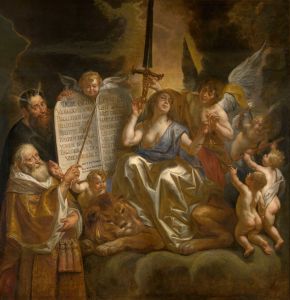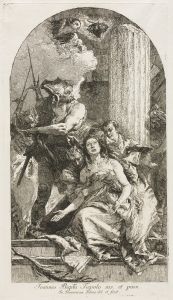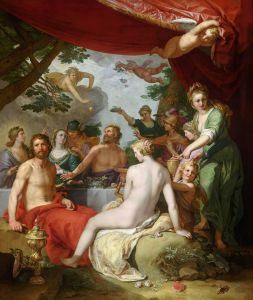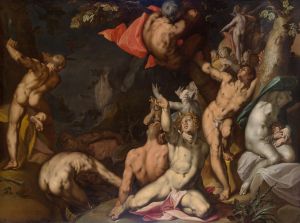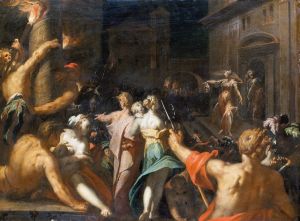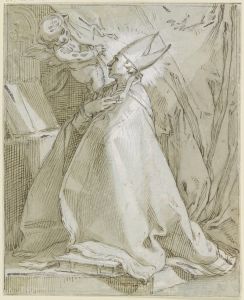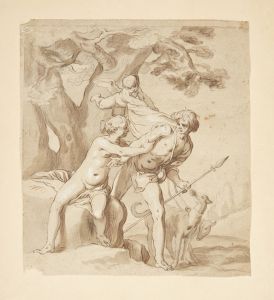
The martyrdom of Saint Catherine
A hand-painted replica of Abraham Bloemaert’s masterpiece The martyrdom of Saint Catherine, meticulously crafted by professional artists to capture the true essence of the original. Each piece is created with museum-quality canvas and rare mineral pigments, carefully painted by experienced artists with delicate brushstrokes and rich, layered colors to perfectly recreate the texture of the original artwork. Unlike machine-printed reproductions, this hand-painted version brings the painting to life, infused with the artist’s emotions and skill in every stroke. Whether for personal collection or home decoration, it instantly elevates the artistic atmosphere of any space.
Abraham Bloemaert, a prominent Dutch painter and printmaker of the late 16th and early 17th centuries, is known for his contributions to the development of Northern Mannerism and the Dutch Baroque style. One of his notable works is "The Martyrdom of Saint Catherine," which exemplifies his skill in depicting dramatic religious scenes with emotional intensity and intricate detail.
"The Martyrdom of Saint Catherine" portrays the story of Saint Catherine of Alexandria, a Christian martyr who is venerated in both the Eastern Orthodox and Roman Catholic traditions. According to legend, Catherine was a learned noblewoman who converted to Christianity and, due to her faith and eloquence, attracted many followers. Her refusal to renounce her faith led to her persecution under the Roman Emperor Maxentius. The narrative of her martyrdom includes her debate with pagan philosophers, whom she converted, and her subsequent imprisonment and torture.
Bloemaert's depiction of Saint Catherine's martyrdom captures the moment of her execution, which, according to tradition, involved a spiked wheel designed to break her body. However, the wheel miraculously shattered, and she was ultimately beheaded. In the painting, Bloemaert focuses on the dramatic tension of the scene, emphasizing the emotional expressions of the figures involved. The composition is dynamic, with a strong use of diagonal lines and a vivid contrast between light and shadow, highlighting the central figure of Saint Catherine.
Bloemaert's style in this work reflects his Mannerist influences, characterized by elongated figures, complex poses, and a heightened sense of drama. The painting also demonstrates his transition towards the Baroque style, evident in the realistic depiction of textures and the use of chiaroscuro to create depth and volume. The attention to detail in the clothing and the expressions of the figures adds to the overall impact of the scene, drawing the viewer into the narrative.
As a teacher and influential figure in the Utrecht School, Bloemaert's work had a significant impact on the development of Dutch art. His ability to blend the elegance of Mannerism with the emerging naturalism of the Baroque period made his paintings distinctive and influential. "The Martyrdom of Saint Catherine" is a testament to his mastery of composition and his ability to convey complex religious themes with clarity and emotional resonance.
The painting is an important example of religious art from the Dutch Golden Age, reflecting the period's interest in dramatic storytelling and the exploration of human emotion. It also serves as a representation of the enduring appeal of martyrdom stories in Christian art, illustrating themes of faith, sacrifice, and divine intervention.
While specific details about the commission or the current location of "The Martyrdom of Saint Catherine" by Abraham Bloemaert may not be widely documented, the work remains an important part of his artistic legacy. It continues to be studied and appreciated for its artistic merits and its contribution to the rich tapestry of European religious art.





